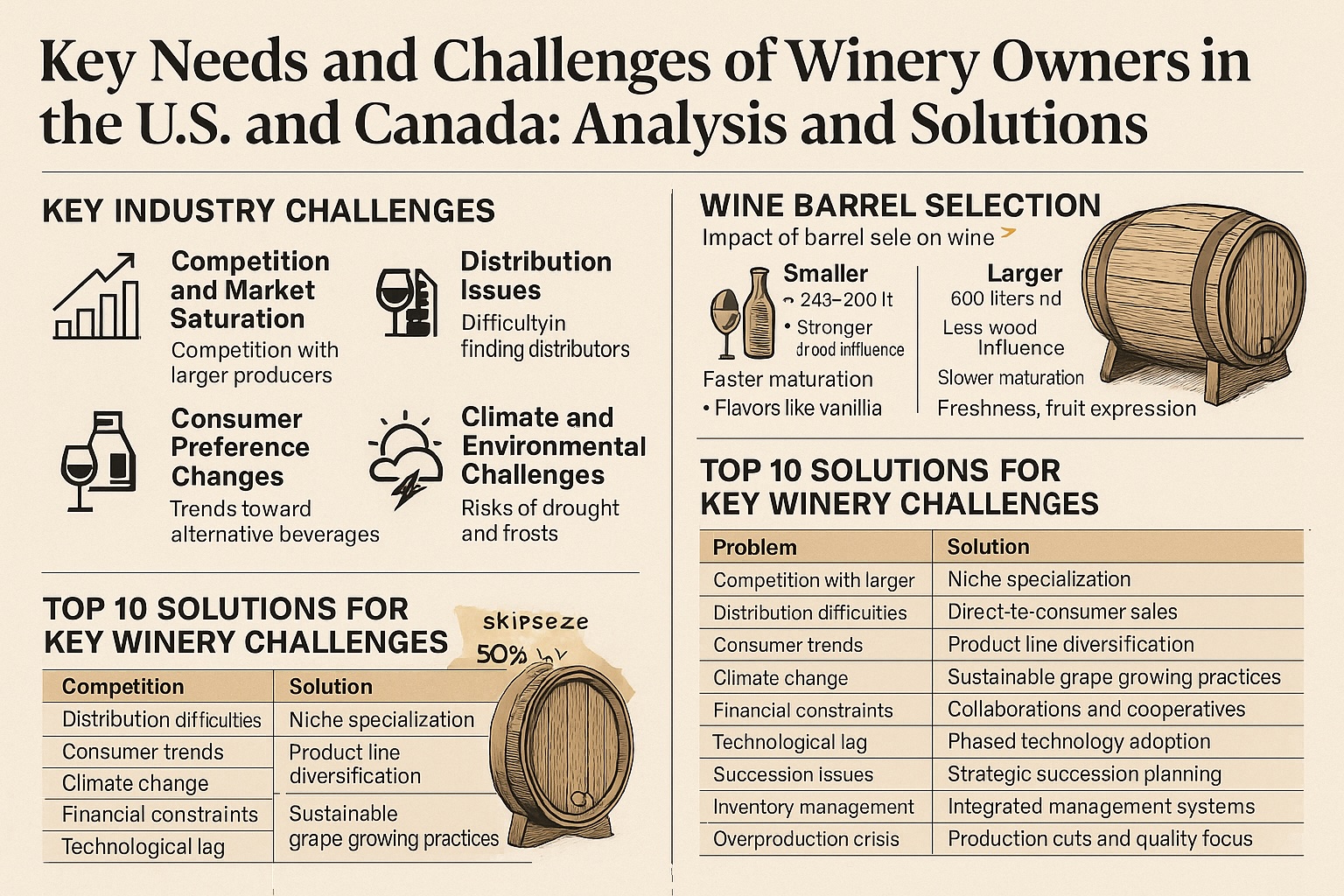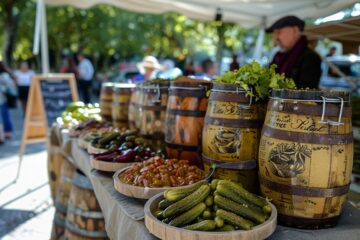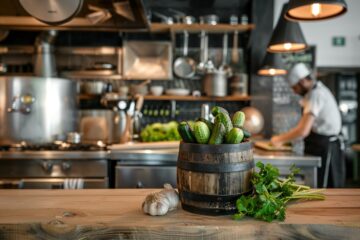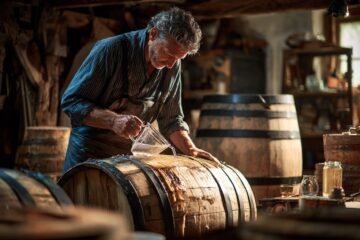Step-by-Step Solutions for Sustainable Growth
The wine industry in North America is evolving rapidly—and not always gently. From saturated markets and changing consumer habits to climate stress and distribution bottlenecks, wineries in the U.S. and Canada are under pressure. But with every challenge comes opportunity. Whether you’re running a boutique family vineyard or scaling a regional operation, understanding how to adapt and respond effectively can determine your long-term success.
Here’s a practical, step-by-step guide to tackling the most pressing issues facing modern wineries—and how to turn those hurdles into stepping stones for growth.
1. Competing in a Saturated Market: Define Your Niche and Stand Out
Problem:
Larger producers dominate shelf space and marketing budgets, making it difficult for small and mid-sized wineries to gain visibility.
Step-by-Step Solution:
- Identify Your Unique Value Proposition: Organic? Rare varietals? Heritage story? Highlight what makes you special.
- Develop a Signature Product Line: Create a flagship wine that represents your brand identity.
- Build a Brand Narrative: Share your story online through video, blogs, and social media.
- Target a Specific Customer Profile: Use analytics and advertising to reach your ideal wine consumer.
2. Solving Distribution Challenges: Go Direct-to-Consumer (DTC)
Problem:
Small wineries struggle to find distributors and get squeezed out of traditional retail channels.
Step-by-Step Solution:
- Set up a mobile-optimized e-commerce website (Shopify, Squarespace, WooCommerce).
- Create a wine club or seasonal subscription box.
- Automate email marketing with tools like Klaviyo or Mailchimp.
- Host virtual tastings via Zoom or Instagram Live.
- Offer local delivery or curbside pickup.
3. Adapting to Consumer Trends: Innovate Your Product Line
Problem:
Consumers, especially younger ones, are leaning toward low-alcohol or alcohol-free beverages.
Step-by-Step Solution:
- Conduct surveys and check wine trend reports.
- Experiment with small-batch natural or alcohol-free wines.
- Try alternative packaging (e.g., cans or mini bottles).
- Collaborate with local food brands for pairing kits.
4. Managing Climate and Environmental Risk: Plan for Resilience
Problem:
Unpredictable weather, droughts, and frosts threaten crops and consistency.
Step-by-Step Solution:
- Trial drought-resistant grape varietals.
- Use smart irrigation and soil sensors.
- Plant cover crops and explore carbon farming.
- Install frost fans and solar panels where feasible.
- Document weather data annually for forecasting.
5. Overcoming Financial Constraints: Cooperate and Automate
Problem:
Small wineries often lack the budget to modernize or scale efficiently.
Step-by-Step Solution:
- Join a winery co-op to share equipment and resources.
- Apply for local and national winery grants or agricultural loans.
- Use winery software (Vintrace, WineDirect) for inventory and compliance.
- Outsource digital marketing and specialized tasks as needed.
6. Handling Succession and Leadership Transition
Problem:
Family wineries often lack a clear succession plan.
Step-by-Step Solution:
- Start family discussions early about future roles and interests.
- Develop a formal succession roadmap with legal and financial advisors.
- Mentor the next generation through real tasks and decisions.
- Create SOPs and record legacy knowledge to ensure smooth handoffs.
7. Using the Right Equipment and Tools
Problem:
Outdated winemaking equipment reduces quality and increases costs.
Step-by-Step Solution:
- Audit your current equipment and track repair needs.
- Upgrade in phases—prioritize tools with high ROI (e.g., smart tanks).
- Don’t overlook sanitation gear: brushes, filters, hoses, etc.
- Choose scalable equipment that grows with your production needs.
Final Thoughts
Owning a winery today means being more than a winemaker—you’re also a marketer, technologist, sustainability advocate, and strategist. The key is to stay flexible and focus on the areas with the highest impact for your business. Whether you improve your distribution model, diversify your product offerings, or modernize operations, consistent, intentional effort will help you stay ahead in a complex and competitive market. Looking for help implementing these strategies? Contact us for personalized advice or download our winery success toolkit.
Test Your Barrel Knowledge (Instant Feedback)
- Which oak type is known for bold vanilla and coconut flavors?
- French Oak
- American Oak
- Hungarian Oak
- What does a smaller barrel typically do?
- Speeds up aging and increases oak impact
- Slows down aging and reduces flavor intensity
- Has no impact on flavor
- What is a benefit of using stainless steel over oak barrels?
- Adds strong tannins
- Neutral aging with lower maintenance
- Toasted vanilla flavors
- What does “medium toast” typically add to wine?
- Intense espresso flavor
- Bold acidity
- Balanced spice, vanilla, and honey
- How long do oak barrels generally last with proper maintenance?
- 1–2 years
- 5–6 years
- 10–15 years




